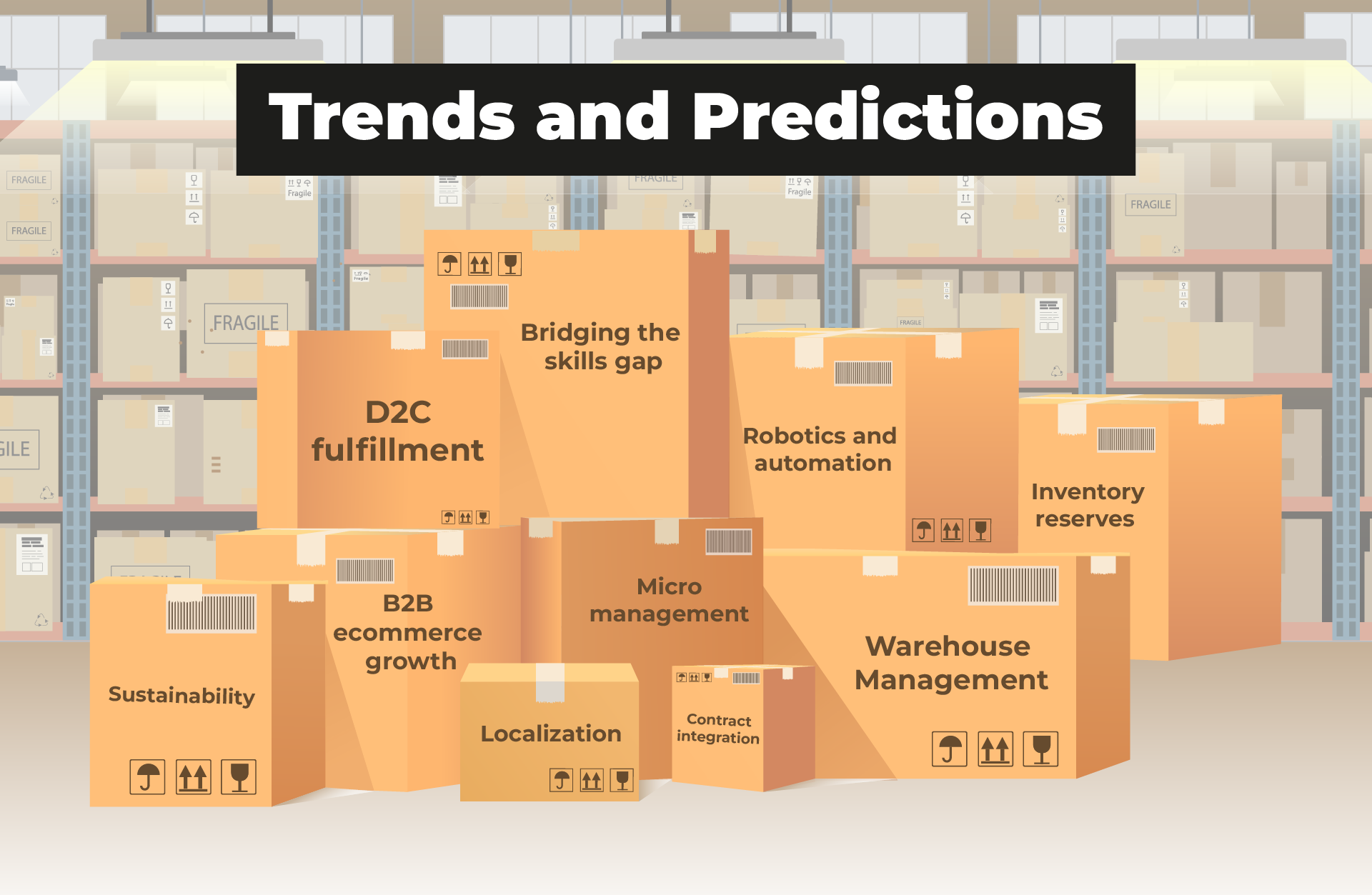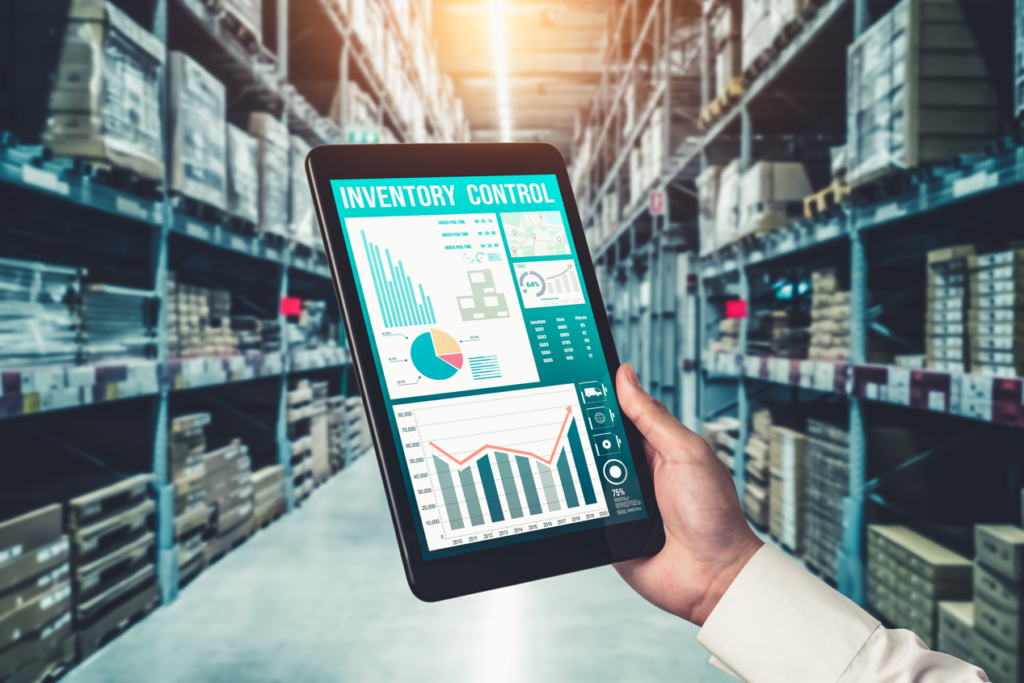Efficient warehouse management is important whether you’re a manufacturer, distributor or wholesaler. However, managing inventory, SKUs, packaging materials, containers, pallets and onward transport is complex. A warehouse management system (WMS) helps you keep track of everything so your products sell successfully online. Combined with a state-of-the-art B2B ecommerce platform like Cloudfy, you can improve efficiency from sale to delivery.
Cloudfy B2B ecommerce software comes with out-of-the-box WMS integration. There’s no need for separate connectors. You can simplify your business, save money and scale your operations. Combined with other key business systems you can share essential information across your organization.
You’ll benefit from industry leading business to business (B2B) and direct to consumer (D2C) ecommerce features. You’ll deliver outstanding online user experiences (UX) with a single low-maintenance and affordable software as a service (SaaS) solution.
Disruptions to supply chains remain a challenge for business to business (B2B) ecommerce operations. Flexible delivery options are now best practice, automation is improving efficiency, and businesses must respond quickly to changing demand. The pandemic inspired creative responses to the immediate challenges; future developments need a more structured approach. Here are some of the current trends and our predictions for warehouse management and B2B ecommerce.
Table of Contents
D2C fulfillment
Some manufacturers successfully implemented direct to consumer (D2C) sales during the pandemic when brick and mortar stores closed. Many warehouse operators now offer a hybrid approach to meet the needs of both B2B customers and D2C operations.
Many manufacturers have discovered the benefits of a more customer centric D2C approach. However, they are reluctant to run their own logistics operations. As a result, there’s increasing demand for third-party logistics (3PL) provision.
Prediction: New collaborative approaches to create seamless customer journeys from purchase to delivery will deliver competitive advantages.
Warehouse management
Multiple connected functions and roles make warehousing complex. With space at a premium, it’s important to use every inch effectively. From inventory management to shipping and customer service, manual processes can hold your business back.
A Warehouse Management System (WMS) streamlines and simplifies warehouse operations. It supports storing, tracking, and transporting your inventory. Integration with B2B ecommerce marketplaces, shippers, accounting and customer service functions simplify processes and improves accuracy.
Prediction: Prioritizing integration of B2B ecommerce, WMS and warehouse robotics will help address staff shortages and reduce operational costs. Inventory locations, picking, packing and onward distribution are all made visible in near real time. You can make the best use of your employees’ time and keep your supply chain partners and customers up to date.
Bridging the skills gap
Warehouse staff and delivery drivers are in short supply. For fast-growing B2B ecommerce businesses this is creating tension throughout their operations. Attracting and keeping the best employees requires competitive pay and extra incentives. Options might include leadership training, flexible work patterns and health and wellbeing benefits.
Prediction: Robotics and automation will improve working conditions by reducing repetitive activities. Employers can then upskill employees so they can spend more time on higher-value work.
Sustainability
Customers want to know in where products come from, how they are made, and how they affect the environment.
Improving the sustainability of B2B businesses and warehousing operations is a major trend.
For example, shipping options such as ‘ship together’ can reduce the amount of packaging and number of delivery journeys needed. Packaging materials using recyclable or compostable materials contribute to reduced carbon footprints. Improved packaging designs that reduce wasted space help minimize transport and material costs. Selection requirements for 3PLs might include electric vehicles for shorter-range deliveries. Timers and monitors for electricity, heat, water and gas can reduce the costs and carbon footprints of business operations.
Prediction: Future decisions about supply chain partners and ongoing management will include sustainability measures. Worldwide regulations will include compulsory reporting throughout the supply chain. This might require evidence of resilience during extreme weather conditions, making analytics and risk assessments important considerations.
Robotics and automation
B2B ecommerce automation allows you to deliver high quality customer support around the clock. It can help manage high order volumes, improve inventory management and meet increasing customer service expectations. Combining this with warehouse automation and robotics can further reduce costs and improve efficiency. It’s an area for development that many companies are now considering.
Prediction: Wearable technology such as smart glasses will improve efficiency and data sharing. Machine learning and augmented reality can improve picking paths and accuracy. Built-in scanners and real-time messaging provide the latest information to your ecommerce site and fulfillment processes.

Micro management
Some companies are already moving from heavily integrated operations to more self-contained micro-supply chains that run in parallel. Customized processes can then make B2B operations more responsive.
For example, smaller warehouse spaces in existing retail stores and sublet spaces in larger warehouses give more flexibility. Closer to large populations, these micro-fulfillment centres can use automation for faster, lower cost deliveries.
To add agility to the digital supply chain microservices linked with application programming interfaces (APIs) offer further flexibility. ‘Composed’ order and spending management, enterprise and customer service systems can meet specific requirements independently.
Prediction: This level of collaboration and agility throughout the supply chain will require updated processes, measurements, skills and practices.
Localization
Minimizing transportation requirements reduces costs and delays. Many companies with single-source and single-region supply strategies are improving resilience by adding multiple alternatives. This might include buying components closer to home for local assembly. More localized supply chains often involve major investment and higher labor costs so the approach must be strategically planned.
Prediction: Multi-warehousing tools allow B2B ecommerce operations to manage and control inventory across more than one location. Integration with your enterprise (ERP) system allows you to manage multiple physical, virtual, and mobile warehousing locations and storefronts.
Inventory reserves
Whether for raw materials or finished products, managing inventory reserves efficiently is an important trend. Global disruptions have highlighted the risks of a ‘just in time’ approach to inventory management. The resulting inventory stockpiling could lead to surpluses in some sectors, combined with a drop in demand due to inflation.
Prediction: Historic inventory patterns and current market conditions will help to calculate future requirements and manage revenue. This will require new skills in strategic stockpiling, back-order planning and sourcing alternative products. Effective decision making is improved when it’s based on near real time data from integrated B2B ecommerce and business systems.
Contract integration
Long-term fixed-price B2B contracts are becoming more difficult to manage in a fast-changing global economy. New contract models are needed to respond to these dynamic conditions and support both suppliers and buyers.
Prediction: Accommodating smaller orders with options to change under certain conditions will give a competitive advantage. Allowing customers to see near real time product data on your B2B ecommerce platform will give them confidence to buy. Integrated business systems will provide greater visibility to manage this growing complexity.
B2B ecommerce growth
More B2B businesses now sell online and buyer preferences for digital purchasing will remain. However, technology can also enable more cross-channel sales journeys. B2B companies should prepare to provide input from expert sales and support staff at key touchpoints.
Prediction: B2B marketplace purchasing of raw goods and components for final products is a likely new growth area. Both suppliers and buyers can benefit, while digital supply chains change in response to new market conditions.
Warehouse management in B2B e-commerce refers to the process of managing and optimizing the movement and storage of products in a warehouse or distribution centre to ensure efficient order fulfilment and delivery to customers in the B2B (business-to-business) e-commerce sector.
It involves managing inventory levels, tracking stock movement, organizing warehouse space, and overseeing order processing and shipping.
Efficient warehouse management in B2B e-commerce can provide several benefits to businesses, including:
• Improved order accuracy and fulfillment speed
• Better inventory control and management
• Enhanced customer satisfaction
• Increased operational efficiency and cost savings
• Improved data accuracy and visibility
Technology can help in improving warehouse management in B2B e-commerce by providing real-time inventory tracking, automating processes, optimizing storage and shipping, and facilitating communication between different systems and stakeholders.
- D2C fulfillment
- Warehouse management
- Bridging the skills gap
- Sustainability
- Robotics and Automation
- Micromanagement
- Localization
- Inventory Reserves
- Contract Integration
- Ecommerce growth
- Implement efficient inventory management systems.
- Optimize warehouse layout for maximum efficiency.
- Train staff on safety procedures and best practices.
- Use technology such as barcode scanning and automation to streamline processes.
- Regularly review and analyze data to identify areas for improvement.
- Implement a robust order fulfillment process.
- Use real-time tracking to improve visibility and control.
- Continuously improve processes through regular monitoring and optimization

How to Future-Proof Your B2B Ecommerce Supply Chain with Technology?
The global economy is constantly flexing and changing but you can future-proof your B2B ecommerce supply chain with technology. Uncertainty is now a fact of everyday life for all businesses. Proactive management of a diverse supplier network, predictive analytics and … Read More

The Increasing Importance of Data Analytics in B2B Ecommerce
Business to business (B2B) buying habits are changing and headless B2B ecommerce will help you keep pace. There are so many new ways to access … Read More

Revolutionizing Business: Exploring B2B Ecommerce in Slovenia
Business to business (B2B) buying habits are changing and headless B2B ecommerce will help you keep pace. There are so many new ways to access … Read More






